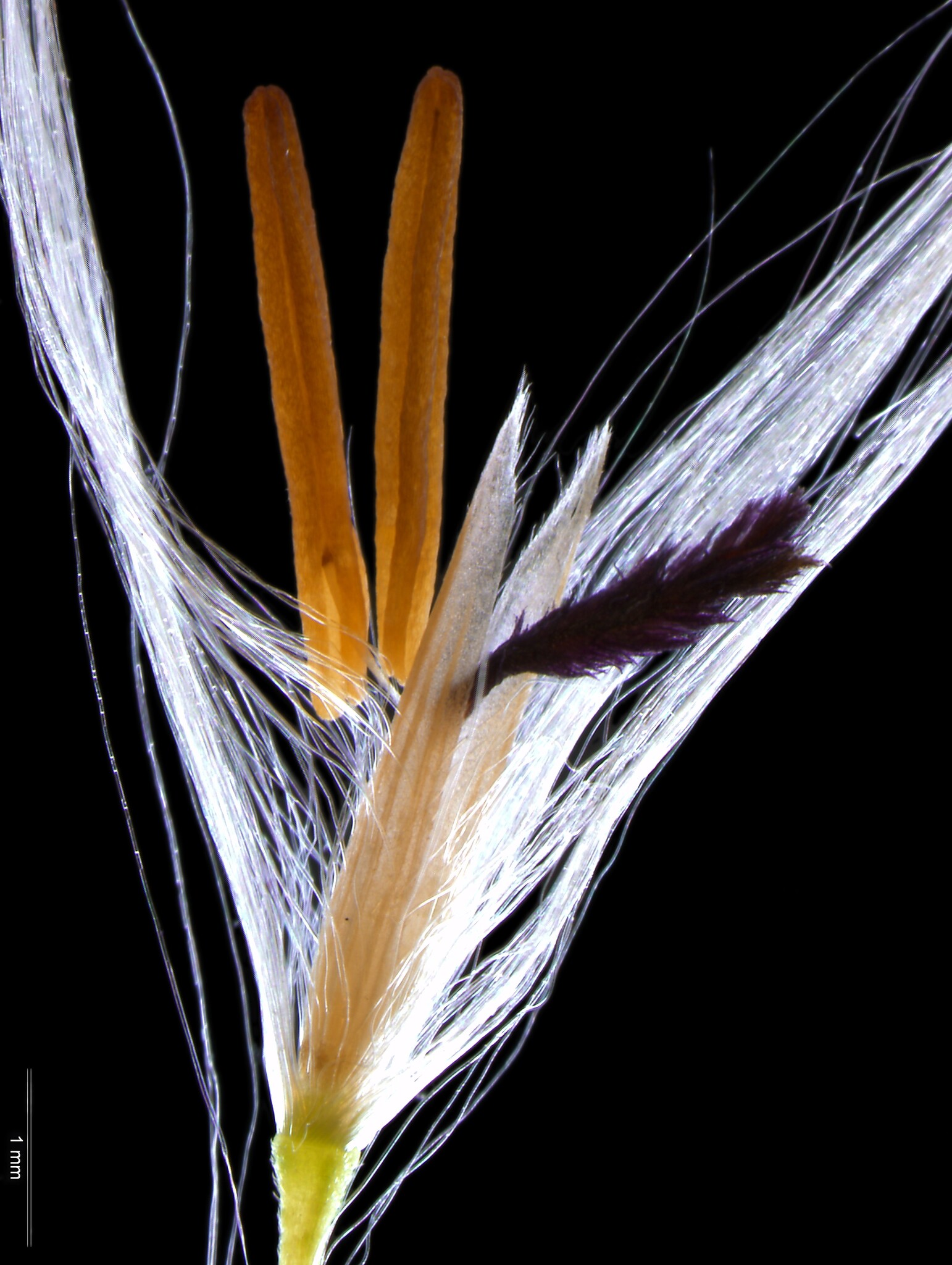
Commemorating F. Imperato (1550–1625), a pharmacist from Naples.
Rhizomatous perennial grasses. Leaves mostly basal. Leaf blades flat; rolled in bud. Ligules membranous with marginal hair. Inflorescence a spike-like panicle, spatheless. Spikelets 2 (with 1 stalk), each with 2 florets, disarticulating from the tips of their stalks. Glumes 2, more or less the same and with 3-9 nerves with basal silky hair that stays attached when the spikelet is shed. Lower floret sterile (rarely male), upper floret bisexual, both shorter than the glumes. Lemmas reduced, sometimes absent, awnless, hairless, 0-1 nerved. Palea apically notched, awnless, nerveless.
A genus allied to Miscanthus but distinguished by the contracted panicle and deficient floral parts.
Known in horticulture through the ornamental cultivar I. cylindrica 'Rubra'.
I. brasiliensis and I. cylindrica are significant weeds; I. cylindrica var. major is used in papermaking.
Division.
Inflorescence a soft plumed spike; spikelets paired in 'long and short' combinations; glumes with long silvery hairs especially towards the base.
8 species from tropical and subtropical areas. 1 species is native to Australia.
Source: (2005). Poaceae. In: . Horticultural Flora of South-eastern Australia. Volume 5. Flowering plants. Monocotyledons. The identification of garden and cultivated plants. University of New South Wales Press.
